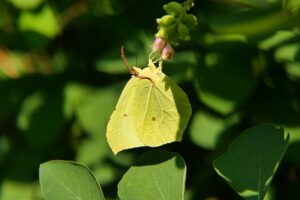Understanding Leaf Miners
Learn how to get rid of leaf miners. Leaf miners are pesky larvae of various insect species, including flies, moths, and beetles. They harm plants by burrowing into leaves and creating winding tunnels, which are visible as white or yellowish trails on foliage. This not only affects the aesthetic appeal of the plants but can also compromise their ability to photosynthesize effectively, leading to reduced growth and vitality. In severe cases, infestations can substantially weaken plants, making them more susceptible to disease and environmental stresses.
Identifying Signs of Leaf Miner Infestations
Recognizing the presence of leaf miners early can be crucial in managing an infestation. The most telling sign is the appearance of serpentine, squiggly lines or blotches on the leaves, which are actually the tunnels made by the larvae as they feed. In some plants, you may also notice thin, transparent areas of leaf tissue or speckled discoloration. Severe infestations can result in widespread yellowing and dropping of leaves. It’s also worth inspecting the undersides of leaves for tiny eggs or larvae to catch an infestation before it spreads further.
Prevention Tips for Leaf Miners
Selecting Resistant Plant Varieties
Choosing plant species that are resistant to leaf miners is an effective preventative strategy for gardeners. Some plants possess natural defenses that make them less appealing to the pests that spawn leaf miners, or they may be able to withstand damage without significant health impact. Researching and planting such varieties can minimize the need for further intervention and maintain a healthy, vibrant garden. When selecting new plants, consult with local nurseries or extension services for recommendations on leaf miner-resistant varieties suited to your climate and soil conditions.
Implementing Proper Cultural Practices
Cultural practices are essential in reducing the impact of leaf miner populations within a garden setting. Maintaining garden hygiene by regularly removing and disposing of affected leaves can significantly deter the spread of leaf miners. Similarly, promoting the health of plants through adequate watering, fertilization, and pruning practices strengthens their capacity to recover from and resist infestations. Vigilant monitoring of plants for early signs of leaf miner activity allows for timely intervention, thereby protecting the garden ecosystem from these invasive pests. Implementing these strategies forms a strong foundation for a robust integrated pest management program.
Regular inspection of plants is crucial for the early detection of leaf miners. Gardeners should make a habit of examining their plants, paying special attention to new foliage, where leaf miners often first appear. Look for the distinctive trails or ‘mines’ left by larvae as they feed within the leaf tissue. These serpentine or blotchy patterns on leaves are usually visible before other symptoms of distress manifest. By identifying infestations in their initial stages, gardeners can employ early treatment options that are typically more effective and less disruptive to the surrounding environment.
Natural Control Methods for leaf Miners
Natural control methods can significantly mitigate the presence of leaf miners without harming the environment. Introducing beneficial insects, such as parasitic wasps, lacewings, and ladybugs, can be an effective biological control tactic. These predators naturally keep leaf miner populations in check by preying on their larvae. Moreover, organic treatments like neem oil or insecticidal soaps, when used appropriately, can provide a safe and effective defense against leaf miners. These organic applications disrupt the life cycle of leaf miners and minimize their damage while being safe for beneficial insects, thus preserving the ecological balance within the garden.
Chemical Control Options for Leaf Miners
While natural methods are preferred for their environmental friendliness, there are times when chemical control options become necessary. Chemical pesticides should be considered when leaf miner infestations are extensive, and natural control methods have proven ineffective. It’s important to select chemicals that are specifically formulated to target leaf miners to ensure the safety of other beneficial insects and organisms within the ecosystem.
Before applying chemical treatments, thoroughly read and follow label instructions to protect yourself and the environment. Personal protective equipment such as gloves, masks, and goggles should be worn to prevent exposure to harmful chemicals. Moreover, chemicals should be applied during calm weather conditions to prevent drift and accidental contamination of nearby plants or water sources. Spot treatments are often more advisable than blanket applications, focusing only on the affected areas to minimize the impact on non-target specie and targeted application of chemical pesticides should only be considered as a last resort when all other methods fail.
Monitoring and Management
Consistent monitoring of plant health is crucial in managing leaf miner populations effectively over the long term. Regular inspection of plants for signs of leaf miner activity, such as the distinctive trails left behind as they feed, enables early detection and timely intervention. Integrating methods such as introducing natural predators, practicing cultural controls like crop rotation and debris removal, and applying insecticidal soaps or oils can help in keeping leaf miner infestations under control. Establishing a balanced ecosystem with a diversity of plants can also attract beneficial insects that prey on leaf miners, providing a sustainable approach to mitigate the damage caused by these pests.


